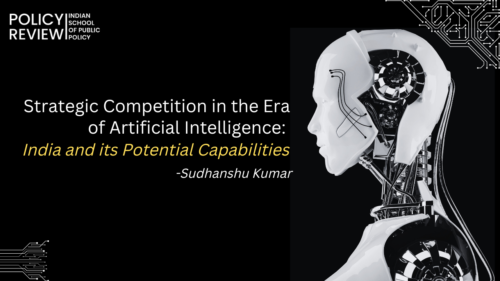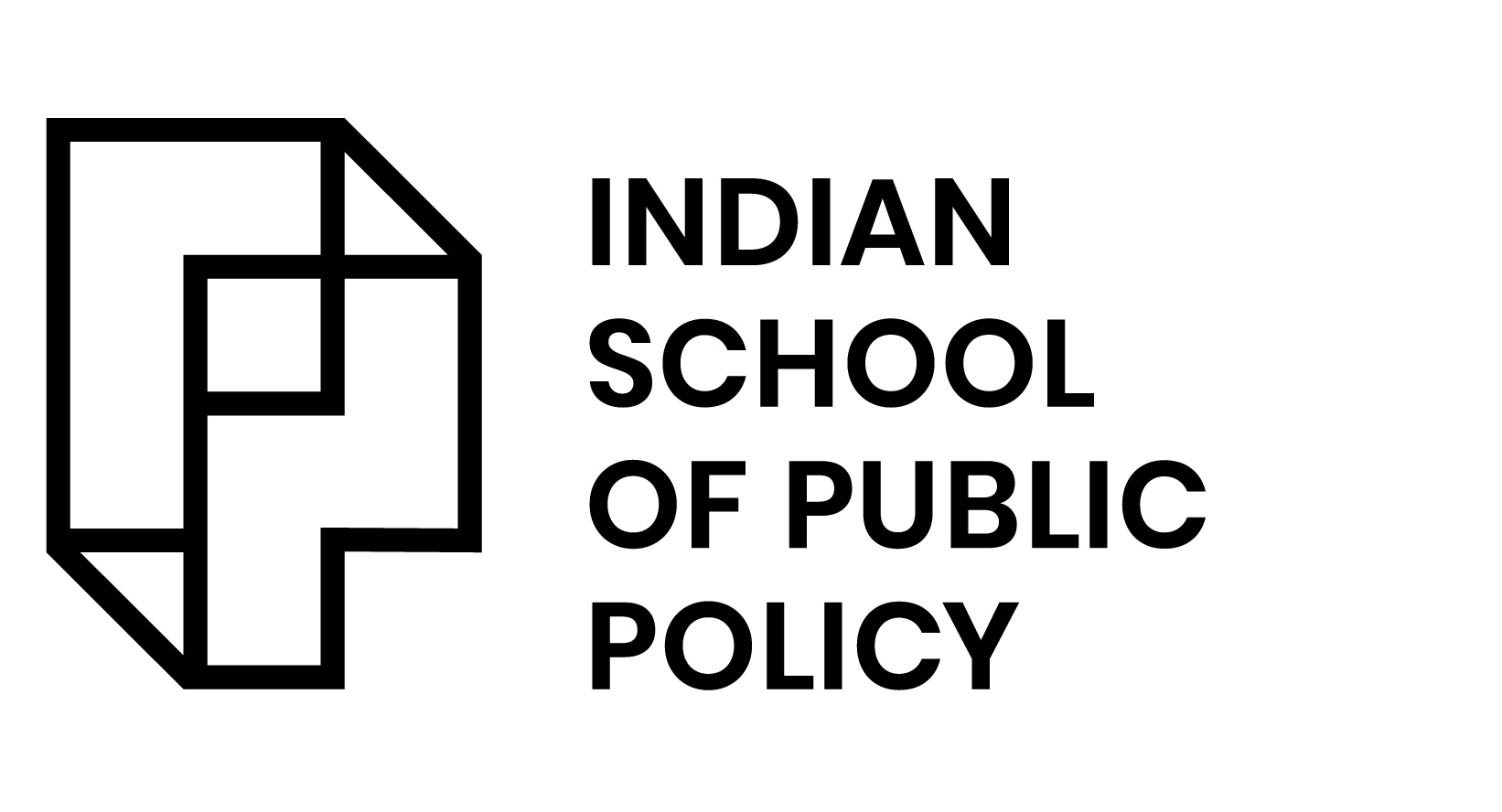
Strategic Competition in the Era of Artificial Intelligence: India and its Potential Capabilities

The realist assumption of the world being an anarchical place and nation-states driven by self-interests is a predominant theoretical worldview in international politics and diplomacy. Historically, nation-states have always tried to augment their military and economic capabilities to achieve a balance of power with rival nation-states. Right from the invention of gunpowder to the development of nuclear weapons technological advancements in science and technology have always given an edge to nation-states that pursue new and emerging technologies with flair and aptness.1 In the last 100 years after the development of nuclear and space technologies, the race for development in AI is the next frontier on which countries will challenge each other for hegemony.2 AI is emerging as a new tool for dominance in the economic and military arena in the context of the emerging geopolitical landscape influenced by technology. Countries like China and the US are investing their resources increasingly in AI to achieve substantial economic and military superiority.3
India has started to recognise the importance of AI and started prioritising resources for its development in the past few years from a strategic viewpoint.4 In the current scenario, the major challenge with AI in India is the disruption brought by the augmentation of automation in various industries.5 The recurring job losses in several areas of the economy are a major problem for the Indian government to tackle.6 But on the other hand, AI also has the potential to add around $1 trillion to the Indian economy, according to one estimate by Nasscom.7 Having a vibrant start-up industry and culture of entrepreneurship, India can leverage emerging human capital and a foundational digital economy to increase its influence in the global AI market.
Since China is advancing itself in this field it is paramount for India to enhance its competence in AI to take full advantage of its potential. New Delhi is looking forward to developing a holistic national strategy for AI with a special focus on areas of agriculture, education, infrastructure and transportation.8 Along with this, the economic advantages gained from commercial applications of AI can be translated into the military arena if given proper focus on research and development. India’s military modernisation programs must have the element of AI in their development to create a profound level of ascendancy in geostrategic contours.
India needs to remove the bottlenecks and hurdles which can come over in the seamless distribution of AI capabilities across sectors for its development and applications. To mark a strong place in the techno-competitive world of AI, India needs a strong policy framework to enable it to develop a robust AI ecosystem. The establishment of a Task Force on AI for India’s Economic Transformation by the commerce ministry initiated in 2017 is a desirable step in this process.9
Members from academia, industry and bureaucracy are coming together to formulate a concrete and implementable plan for Indian industrial and commercial institutions looking forward in this field. Its agenda includes the development of applications in several domains such as services in fin-tech, infrastructure upgradation, agricultural efficiency and educational technology.10 In a certain way, it is functioning as a ‘key enabler’ for the development of AI and providing other forms of support to entrepreneurs and businesses. It is also working in directing efforts towards advancing AI development for enhancing national security and strategic geopolitical competencies.
Talent is a key factor in the development of AI-based technologies. For producing the number of engineering graduates per year India is on par with the US and China. However, when it comes to research in AI, the US has produced 3 times more and China 5 times more PhD holders in AI than India in the last decade.11 Due to the lack of doctoral programs in India the talent pipelines get choked and do not result in substantial output and quality IPR production.12 Along with this the inability to attract talent from around the world and a persistent negative outflow in the form of brain drain are curtailing the possibilities of developing state-of-the-art AI.13 Though India is performing remarkably well in producing good quality research in AI in comparison to most countries, it is still lagging far behind China and the US. In the last decade from 2010-19, India stands third in publishing 83,384 scholarly articles on AI but it has a long way to go before it catches up with China and the US which have published 471,726 and 310,562 AI papers in the same period.14
For core research and development in AI, the most vital component is the availability of a high level of computing power. India lacks significantly in the availability of the infrastructure required to work on AI/ML systems.15 The systems and applications based on AI require sophisticated chip technology to deal with vast amounts of data. At the current stage, India does not stand at an advantageous position in chip manufacturing even though it has a strong hold on chip design.16 This critical gap in designing and manufacturing exists due to the lack of availability of substantial capital for investment in fulfilling the demands of fabrication facilities.
The Government of India can come up with new policy initiatives to boost private investment in chip manufacturing because to develop a viable industry, sizable private investment in chip fabrication facilities is essential.17 Its implications can be seen very well in the fact that we have only 3 supercomputers in the top 500 in the world while China and the US have 173 and 128.18
Alongside this lack of critical infrastructure, several AI companies in India are dependent on cloud infrastructure. Nonetheless, cloud adoption in India is at a nascent stage today. The percentage of GDP spent on IT is less than 2 per cent which is way less than what many countries spend on average.19 India needs to spend more on its IT budget to overcome the present challenges and strategic problems of the future.
Due to increased connectivity, data generation, and the rise in computing power, AI patent applications have grown considerably since 2012.20 Today India stands in the top 10 countries that file patents related to AI-based applications and technologies.21 This is a commendable achievement for India taking into account the fact that it did not have any patents in AI before 2002. But India still has a long way to go in this race because even small countries like Taiwan and South Korea are ahead of India. The progress achieved by India in the last few years is in sync with the global AI patent activity, and the report by CSET predicts that Indian patents in AI will grow more with time if the time taken to process patent application improves.
India has to accelerate its speed in AI development because the progress in these types of technologies happens exponentially. The more you invest time, effort and money in these technological processes the result comes in the compounded form. Since the US and China are moving ahead at a rapid pace in this, there exists a sure chance that they will witness more exponential growth in the coming years regarding the development of AI. It’s high time to recognise our limitations, and move towards doing a substantial effort in this process otherwise we will end up getting dependent on them in future for venturing into the development of hyper-advanced AI applications. We need to maintain sovereignty in terms of AI research and development, just like we have maintained it in the fields of nuclear and space.
To fulfil its agenda of advanced AI development India needs to tackle major obstacles confronting it. The major challenge in this field for India is the lack of adequate expertise, human resources and infrastructural necessities.22 Countries like China and the US have developed substantial manpower in AI by promoting this at a base level of educational institutions and small enterprises. The skilled manpower in AI in the US is supported by the initiatives of the private sector and in China, it is the government which is at the forefront of formulating all the major decisions regarding the development of AI. India should focus on striking a synergetic balance in both public and private for AI development such that it can augment the applications of AI according to its commercial and military needs. A collaborative academia-industry linkage along with a proper mechanism for producing a robust talent pipeline of AI experts will help India in taking advantage of the possibilities that AI may bring.23
The idea here is not just to develop strategic capabilities in AI, but also to make India a technologically advanced country in other fields as well. The only way to make India a technologically advanced country is to make its engineers and scientists celebrities. We see only Bollywood stars, sportspersons, politicians, and even bureaucrats as popular stars in India. In China it is the opposite, engineers in coding games are considered the new celebrities who feature in robot competitions.24 All of China celebrates these games and their winners. In India, we need to do the same thing. The motivation of young developers should not be limited to getting high packages and job opportunities abroad, but to getting widespread social recognition for their achievements at home itself. It will help in creating a legacy for upcoming brilliant coders, scientists and engineers who will work for the technological progress of the country and not some foreign MNC. Thus, there is a need to develop AI literacy amongst both parents and children so that it will help develop a culture of innovation and scientific thinking at a fundamental level.25
The generation after the internet generation is the AI generation. They are growing up with technologies like Alexa, and Siri. Children see them as artificial living beings.26 With more augmentation of these technologies in our lives, different types of challenges will arrive. Issues of ethical AI with its background in data biases and unrepresentativeness in training data are ongoing.27
An essential awareness among the citizenry about how machine learning algorithms function and how data is used to make decisions will help immensely in tackling these normative issues. Thus, government institutions and policymakers have the responsibility to both protect their citizenry from the perils of AI as well as create a strategic advantage for India in global politics. It is becoming increasingly evident that data-based technologies like AI will be the next big thing after nuclear weapons and space programmes in international politics. There is no denying in saying that the countries that will wield the powers of AI will rule the world in the future. India as a sovereign nation-state must go ahead with a well-formulated roadmap for the development of AI along with playing the role of a responsible power in the governance of the global technology regime.
Register your Interest to Study at ISPP
Endnotes
- William H. McNeil, The Pursuit of Power: Technology, Armed Force, and Society since AD 1000 (Chicago, IL: University of Chicago Press, 1982); and William H. McNeill, The Rise of the West: A History of the Human Community: With a Retrospective Essay (Chicago, IL: University of Chicago Press, 1991
- Colin Clark, “Our Artificial Intelligence ‘Sputnik Moment’ Is Now: Eric Schmidt & Bob Work,” Breaking Defense, Nov. 1, 2017, https://breakingdefense.com/2017/2011/our-artificial-intelligence-sputnik-moment-is-now-eric-schmidt-bob-work/
- John R. Allen and Amir Husain, “The Next Space Race Is Artificial Intelligence,” Foreign Policy, Nov. 3, 2017, http://foreignpolicy.com/2017/2011/2003/the-next-space-race-is-artificial-intelligence-and-america-is-losing-to-china
- INDIAai,”National Strategy for Artificial Intelligence”, https://indiaai.gov.in/research-reports/national-strategy-for-artificial-intelligence#:~:text=Given%20this%20background%2C%20NITI%20Aayog,e)
- “Workforce automating faster than expected;automation,digitisation in India above the global average,” The Economic Times, October 21, 2025,
https://m.economictimes.com/jobs/workforce-automating-faster-than-expected-automation-digitisation-in-india-above-global-average-study/articleshow/78785809.cms - Indian IT firms set to slash 3 mn jobs by 2022 due to automation: BofA report
https://www.livemint.com/news/india/indian-it-firms-set-to-slash-3-mn-jobs-by-2022-due-to-automation-boa-report-11623850905672.html - Nasscom(2017)“Readying India for a $ 1 trillion opportunity through digital”,
https://nasscom.in/sites/default/files/newsline_pdf/readying-india-for-a-usd-1-trillion-opportunity-through-digital.pdf - NITI Aayog, “Discussion Paper: National Strategy for Artificial Intelligence,” June 2018, http://www.niti.gov.in/writereaddata/files/document_publication/NationalStrategy-for-AI-Discussion-Paper.pdf
- “Commerce Ministry sets up task force on artificial intelligence,” The Hindu, August 25, 2017,
https://www.thehindu.com/business/commerce-ministry-sets-up-task-force-on-artificial-intelligence/article19561597.ece - Richa Bhatia, “A Look At India’s Unique Initiative On Artificial Intelligence Task Force,” Analytics India, January 18, 2018, https://analyticsindiamag.com/a-look-india-unique-initiative-artificial-intelligence-task-force
- JF Gagne, Grace Kiser, and Yoan Mantha, “Global AI Talent Report 2019” (Element AI, April 2019), https://jfgagne.ai/talent-2019.
- CSET report,” Mapping India’s AI potential”,
https://cset.georgetown.edu/wp-content/uploads/CSET-Mapping-Indias-AI-Potential-1.pdf - Marco polo,”Global AI talent tracker”, 2022,
https://macropolo.org/digital-projects/the-global-ai-talent-tracker/ - supra12.
- ibid.
- Parth Satam, “Semiconductors | With China struggling, India has a long way to go”, February 17, 2022, https://www.moneycontrol.com/news/opinion/semiconductors-with-china-struggling-india-has-a-long-way-to-go-8114011.html
- https://www.meity.gov.in/esdm/pli
- https://www.top500.org/lists/top500/2022/06/
- Samaya Dharamaraj,”India ICT spending will reach $144 billion by 2023”,
https://opengovasia.com/india-ict-spending-in-will-reach-144-billion-in-2023/ - INDIAai,”AI Patents: Driving Emergence of India as an AI Innovation Hub”, June 18,2021
https://indiaai.gov.in/research-reports/ai-patents-driving-emergence-of-india-as-an-ai-innovation-hub - Nasscom(2020),”AI Patents – Driving Emergence Of India As An AI Innovation Hub”.
- supra 12.
- Center for a New American Security(July 2018),”Strategic Competition in an Era of Artificial Intelligence”, Michael C. Horowitz, Gregory C. Allen, Elsa B. Kania, and Paul Scharre
- “Robot competition aims to cause spark among youth”, March 08, 2023
https://www.chinadaily.com.cn/a/202208/03/WS62ea2608a310fd2b29e7012a.htmlhttps://hbr.org/search?term=james%20 - L Ganeshkumar,”Need for Artificial Intelligence Literacy”, Feb 2021, https://ictconnect.in/Tech/Article.aspx?articletitle=Need%20for%20Artificial%20Intelligence%20Literacy#:~:text=In%20October%202020%2C%20during%20the,key%20to%20establishing%20this%20trust.
- World economic forum(2022),”Our children are growing up with AI. Here’s what you need to know”, https://www.weforum.org/agenda/2022/01/artificial-intelligence-children-technology/
- Harvard business review(2019),”What Do We Do About the Biases in AI?”, October 25, 2019
https://hbr.org/2019/10/what-do-we-do-about-the-biases-in-ai

